The Use of the Novel Optical Method SEZO AM (WiRan Ltd.) for Measurements of Particulate Matter (PM10–2.5) in Port Areas-Case Study for Port of Gdynia (Poland)
Abstract
1. Introduction
2. Materials and Methods
3. Results and Discussion
3.1. SEZO AM and EDM 180: Comparison of PM2.5 and PM10 Concentrations Obtained during Two Campaigns
3.2. Influence of Meteorological Condition on PM2.5 and PM10 Concentrations Obtained by SEZO AM Device during Two Campaigns
3.3. SEZO AM Comparison with TSI OPS3330 in Dust Chamber
3.4. SEZO AM Optimization
4. Conclusions
Author Contributions
Funding
Institutional Review Board Statement
Informed Consent Statement
Data Availability Statement
Conflicts of Interest
Appendix A
| Date | PM2.5 (µg/m3) | PM10 (µg/m3) | T (°C) | Rh (%) | Ws (m/s) | Dominant Wind Directions | ||
|---|---|---|---|---|---|---|---|---|
| SEZO AM | EDM 180 | SEZO AM | EDM 180 | |||||
| 11 March 2021 | 75.7 | 46.0 | 77.6 | 53.8 | −2.2–3.3 | 44.0–82.6 | 12.7 | 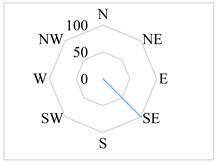 |
| 16 March 2021 | 50.0 | 30.7 | 55.7 | 33.9 | 0.1–5.7 | 69.5–84.7 | 3.7 | 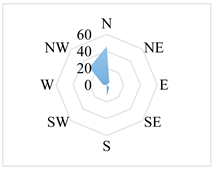 |
| 25 March 2021 | 53.8 | 37.7 | — | — | 4.5–12.2 | 46.8–80.9 | 2.5 | 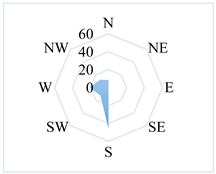 |
| 31 March 2021 | — | — | 11.5 | 21.1 | 8.8–20.1 | 17.4–77.6 | 4.0 | 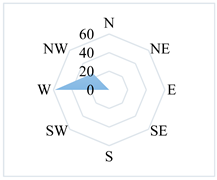 |
| 9 April 2021 | 4.5 | 18.9 | 5.1 | 28.5 | 2.5–11.7 | 34.9–64.0 | 6.5 | 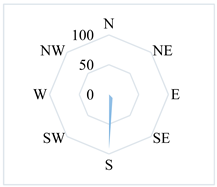 |
| 14 April 2021 | 13.5 | 7.9 | — | — | 3.1–6.7 | 58.4–77.8 | 9.1 | 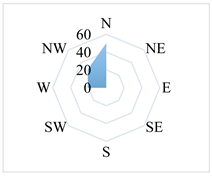 |
| 17 April 2021 | 3.2 | 17.6 | 3.4 | 22.3 | 4.0–9.2 | 63.7–80.4 | 6.0 |  |
| 18 April 2021 | 7.7 | 8.2 | 20.9 | 26.4 | 5.2–14.6 | 53.2–77.4 | 5.4 | 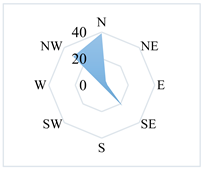 |
| 21 April 2021 | — | — | 9.8 | 35.6 | 5.6–15.4 | 37.9–70.0 | 4.6 | 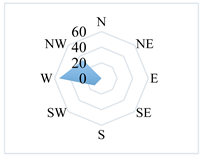 |
| 28 April 2021 | — | — | 16.3 | 22.8 | 1.5–10.3 | 46.2–78.1 | 4.5 |  |
| 6 August 2021 | 2.0 | 7.0 | 2.0 | 14.1 | 17.0–19.5 | 52.0–72.8 | 7.6 | 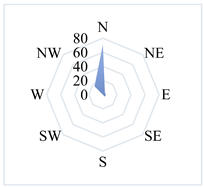 |
| 15 August 2021 | 3.7 | 9.2 | — | — | 15.2–21.8 | 45.6–77.5 | 2.7 | 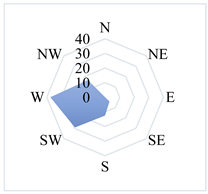 |
| 17 August 2021 | — | — | 2.7 | 9.8 | 12.8–19.3 | 49.0–82.0 | 4.5 | 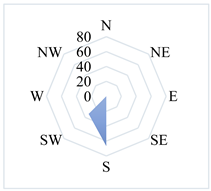 |
| 23 August 2021 | 1.3 | 4.4 | 1.4 | 5.4 | 15.7–18.6 | 51.5–70.3 | 6.6 |  |
| 5 September 2021 | 1.8 | 5.2 | — | — | 9.5–16.5 | 46.2–69.0 | 3.5 | 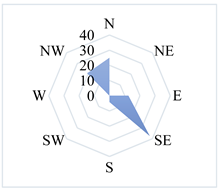 |
| 6 September 2021 | 3.5 | 8.3 | 3.5 | 13.2 | 9.0–19.3 | 39.9–71.8 | 2.7 |  |
| 7 September 2021 | — | — | 4.8 | 15.4 | 12.2–20.8 | 39.4–59.8 | 3.6 | 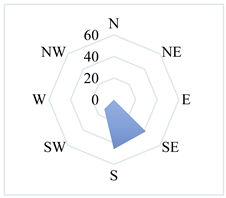 |
| 19 September 2021 | 2.9 | 6.8 | 2.9 | 8.5 | 11.0–12.8 | 55.5–68.8 | 8.3 | 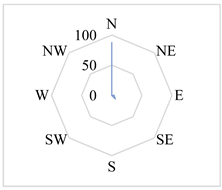 |
References
- Eyring, V.; Isaksen, I.S.A.; Berntsen, T.; Collins, W.J.; Corbett, J.J.; Endresen, O.; Grainger, R.G.; Moldanova, J.; Schlager, H.; Stevenson, D.S. Transport impacts on atmosphere and climate: Shipping. Atmos. Environ. 2010, 44, 4735–4771. [Google Scholar] [CrossRef]
- Stockholm Convention on Persistent Organic Pollutants (POPs), 2011, UNEP/POPS/COP.5/INF/27. Available online: https://www.pops-gmp.org/res/file/UNEP-POPS-COP_5-INF-27.pdf (accessed on 6 March 2022).
- McLean, C.; Shao, G. Simulation in Shipyards: Simulation of Shipbuilding Operations; IIEE Computer Society: Washington, DC, USA, 2001; pp. 870–876. [Google Scholar] [CrossRef]
- Corbett, J.J.; Fischbeck, P.S.; Pandis, S.N. Global Nitrogen and Sulfur Emission Inventories for Oceangoing Ships. J. Geophys. Res. Atmos. 1999, 104, 3457–3470. [Google Scholar] [CrossRef]
- Puig, M.; Wooldridge, C.; Darbra, R.M. Identification and selection of Environmental Performance Indicators for sustainable port development. Mar. Pollut. Bull. 2014, 81, 124–130. [Google Scholar] [CrossRef] [PubMed]
- Bailey, D.; Solomon, G. Pollution Prevention at Ports: Clearing the Air. Environ. Impact Assess. Rev. 2004, 24, 751–752. [Google Scholar] [CrossRef]
- Wang, H.; Shi, G.Y.; Zhang, X.Y.; Gong, S.L.; Tan, S.C.; Chen, B.; Che, H.Z.; Li, T. Mesoscale modelling study of the interactions between aerosols and PBL meteorology during a haze episode in China Jing–Jin–Ji and its near surrounding region—Part 2: Aerosols’ radiative feedback effects. Atmos. Chem. Phys. 2015, 15, 3277–3287. [Google Scholar] [CrossRef]
- Lewandowska, A.; Falkowska, L.; Murawiec, D.; Pryputniewicz, D.; Burska, D.; Bełdowska, M. Elemental and organic carbon in aerosols over urbanized coastal region (southern Baltic Sea, Gdynia). Sci. Total Environ. 2010, 408, 4761–4769. [Google Scholar] [CrossRef] [PubMed]
- Duhl, T.R.; Clements, N.; Mladenov, N.; Cawley, K.; Rosario-Ortiz, F.L.; Hannigan, M.P. Natural and unnatural organic matter in the atmosphere: Recent perspectives on the high molecular weight fraction of organic aerosol. Am. Chem. Soc. 2014, 5, 87–111. [Google Scholar]
- Witkowska, A.; Lewandowska, A.; Falkowska, L.M. Parallel measurements of organic and elemental carbon dry (PM1, PM2.5) and wet (rain, snow, mixed) deposition into the Baltic Sea. Mar. Pollut. Bull. 2016, 104, 303–312. [Google Scholar] [CrossRef]
- Wiśniewska, K.; Lewandowska, A.U.; Staniszewska, M. Air quality at two stations (Gdynia and Rumia) located in the region of Gulf of Gdansk during periods of intensive smog in Poland. Air Qual. Atmos. Health 2019, 12, 879–890. [Google Scholar] [CrossRef]
- IPCC. Summary for Policymakers. In Global Warming of 1.5 °C. An IPCC Special Report on the Impacts of Global Warming of 1.5 °C above Pre-Industrial Levels and Related Global Greenhouse Gas Emission Pathways, in the Context of Strengthening the Global Response to the Threat of Climate Change, Sustainable Development, and Efforts to Eradicate Poverty; Mas-son-Delmotte, V., Zhai, P., Pörtner, H.-O., Roberts, D., Skea, J., Shukla, P.R., Pirani, A., Moufouma-Okia, W., Péan, C., Pidcock, R., et al., Eds.; IPCC: Geneva, Switzerland, 2018. [Google Scholar]
- Cavalli, F.; Facchini, M.C.; Decesari, S. Advances in characterization of size-resolved organic matter in marine aerosol over the North Atlantic. J. Geophys. Res. Atmos. 2004, 109, 1–14. [Google Scholar] [CrossRef]
- O’Dowd, C.D.; de Leeuw, G. Marine aerosol production: A review of the current knowledge. Philos. Trans. R. Soc. A 2007, 365, 1753–1774. [Google Scholar] [CrossRef]
- Hienola, A.I.; Pietikainen, J.P.; Jacob, D.; Pozdun, R.; Petaj, T.; Hyvarinen, A.P.; Sogacheva, L.; Kerminen, V.M.; Kulmala, M.; Laaksonen, A. Black carbon concentration and deposition estimations in Finland by the regional aerosol–climate model REMO-HAM. Atmos. Chem. Phys. 2013, 13, 4033–4055. [Google Scholar] [CrossRef]
- Lewandowska, A.U.; Falkowska, L. High concentration episodes of PM10 in the air over the urbanized coastal zone of the Baltic Sea (Gdynia-Poland). Atmos. Res. 2013, 120–121, 55–67. [Google Scholar] [CrossRef]
- US EPA. Integrated Science Assessment for Particulate Matter, Includes Errata Sheet Created on 2/10/2010; Raport EPA/600/R-08/139F; United States Environmental Protection Agency, Research Triangle Park: Durham, NC, USA, 2009; pp. 2–30.
- Hassanvand, M.S.; Naddafi, K.; Faridi, S.; Nabizadeh, R.; Hossein Sowlat, M.; Momeniha, F.; Gholampour, A.; Arhami, M.; Kashani, H.; Zare, A.; et al. Characterization of PAHs and metals in indoor/outdoor PM10/PM2.5/PM1 in a retirement home and a school dormitory. Sci. Total Environ. 2015, 527–528, 100–110. [Google Scholar] [CrossRef] [PubMed]
- Kennedy, I.M. The health effects of combustion-generated aerosols. Proc. Combust. Inst. 2007, 31, 2757–2770. [Google Scholar] [CrossRef]
- IARC. Outdoor Air Pollution a Leading Environmental Cause of Cancer Deaths, Press Release; International Agency for Research on Cancer, World Health Organization: Lyon, France, 2013; No. 221; pp. 1–4. [Google Scholar]
- Loomis, D.; Grosse, Y.; Lauby-Secretan, B.; El Ghissassi, F.; Bouvard, V.; Benbrahim-Tallaa, L.; Guha, N.; Baan, R.; Mattock, H.; Straif, K. The carcinogenicity of outdoor air pollution. Lancet Oncol. 2013, 14, 1262–1263. [Google Scholar] [CrossRef]
- Saxe, H.; Larsen, T. Air pollution from ships in three Danish ports. Atmos. Environ. 2004, 38, 4057–4067. [Google Scholar] [CrossRef]
- Sorte, S.; Rodrigues, V.; Borrego, C.; Monteiro, A. Impact of harbour activities on local air quality: A review. Environ. Poll. 2020, 257, 113542. [Google Scholar] [CrossRef]
- Chatzinikolaou, S.D.; Oikonomou, S.D.; Ventikos, N.P. Health externalities of ship air pollution at port—Piraeus port case study. Transp. Res. Part D Transp. Environ. 2015, 40, 155–165. [Google Scholar] [CrossRef]
- Gillingham, K.; Huang, P. Racial Disparities in the Health Effects from Air Pollution: Evidence from Ports; National Bureau of Economic Research: Cambridge, MA, USA, 2021; Volume 29108, pp. 5–8. [Google Scholar] [CrossRef]
- Wang, X.; Shen, Y.; Lin, Y.; Pan, J.; Zhang, Y.; Louie, P.K.K.; Li, M.; Fu, Q. Atmospheric pollution from ships and its impact on local air quality at a port site in Shanghai. Atmos. Chem. Phys. 2019, 19, 6315–6330. [Google Scholar] [CrossRef]
- Corbett, J.J.; Winebrake, J.J.; Green, E.H.; Kasibhatla, P.; Eyring, V.; Lauer, A. Mortality from Ship Emission: A Global Assessment. Environ. Sci. Technol. 2007, 41, 8512–8518. [Google Scholar] [CrossRef] [PubMed]
- Bin, L.; Cherng-Yuan, L. Compliance with international emission regulations: Reducing the air pollution from merchant vessels. Mar. Policy 2005, 30, 221–224. [Google Scholar] [CrossRef]
- Han, C.-H. Strategies to Reduce Air Pollution in Shipping Industry. Asian J. Shipp. Logist. 2010, 26, 7–29. [Google Scholar] [CrossRef]
- Harrison, D.; Radov, D.; Patchett, J.; Klevnas, P.; Lenkoski, A.; Reschke, P.; Foss, A. European Commission, Directorate General Environment. In Economic Instruments for Reducing Ship Emissions in the European Union; Nera Economin Consulting: London, UK, 2005; pp. 4–78. [Google Scholar]
- Smith, T.W.P.; Jalkanen, J.P.; Anderson, B.A.; Corbett, J.J.; Faber, J.; Hanayama, S.; O’Keeffe, E.; Parker, S.; Johansson, L.; Aldous, L.; et al. Third IMO GHG Study 2014; International Maritime Organization: London, UK, 2014; pp. 2, 117–124. [Google Scholar]
- Sofiev, M.; Winebrake, J.J.; Johansson, L.; Carr, E.W.; Prank, M.; Soares, J.; Vira, J.; Kouznetsov, R.; Jalkanen, J.-P.; Corbett, J.J. Cleaner fuels for ships provide public health benefits with climate tradeoffs. Nat. Commun. 2018, 9, 406. [Google Scholar] [CrossRef] [PubMed]
- Attah, E.E.; Bucknall, R. An analysis of the energy efficiency of LNG ships powering options using the EEDI. Ocean Eng. 2015, 110, 62–74. [Google Scholar] [CrossRef]
- Lindstad, E.; Ingebrigtsen, B.T. Potential power setups, fuels and hull designs capable of satisfying future EEDI requirements. Transp. Res. Part D Transp. Environ. 2018, 63, 276–290. [Google Scholar] [CrossRef]
- Holnicki, P.; Kałuszko, A.; Stankiewicz, K. Supporting the Management of Atmospheric Air Quality in the City; Research Report; Polish Academy of Science, Systems Research Institute: Warsaw, Poland, 2014; pp. 26–39. [Google Scholar] [CrossRef]
- Bouzarovski, S. Retrofitting the City: Residential Flexibility, Resilience and the Built Environment; Tauris, I.B., Ed.; Bloomsbury Publishing: London, UK, 2015; p. 288. [Google Scholar]
- Bocheński, T.; Palmowski, T.; Studzieniecki, T. The Development of Major Seaports in the Context of National Maritime Policy. The Case Study of Poland. Sustainability 2021, 13, 12883. [Google Scholar] [CrossRef]
- Port of Gdynia Authority. Available online: https://www.wnp.pl/tematy/zarzad-morskiego-portu-gdynia,12967.html (accessed on 9 January 2022).
- Spielvogel, J.; Hartstock, S.; Grimm, H. New methods and standards for fine dust. J. Phys. Conf. Ser. 2009, 170, 012024. [Google Scholar] [CrossRef]
- Gilliam, J.; Hall, E. Reference and Equivalent Methods Used to Measure National Ambient Air Quality Standards (NAAQS) Criteria Air Pollutants; U.S. Environmental Protection Agency: Washington, DC, USA, 2016; EPA/600/R-16/139; Volume I, p. 28.
- SEZO AM. Available online: https://sezo.pl/ (accessed on 15 January 2022).
- MISTYWEST. Available online: https://www.mistywest.com/posts/teardown-sensirion-particle-matter-sensor/ (accessed on 30 January 2022).
- Masic, A.; Pikula, B.; Bibić, D. Mobile Measurements of Particulate Matter Concentrations in Urban Area. In Proceedings of the 28th International DAAAM Symposium, Zadar, Croatia, 8–11 November 2017. [Google Scholar]
- Rogulski, M.; Badyda, A. Investigation of low-cost and optical particulate matter sensors for ambient monitoring. Atmosphere 2020, 11, 1040. [Google Scholar] [CrossRef]
- Borrego, C.; Costa, A.M.; Ginja, J.; Amorim, M.; Coutinho, M.; Karatzas, K.; Sioumis, T.; Katsifarakis, N.; Konstantinidis, K.; De Vito, S.; et al. Assessment of air quality microsensors versus reference methods: The EuNetAir joint exercise. Atmos. Environ. 2016, 147, 246–263. [Google Scholar] [CrossRef]
- Siudek, P.; Falkowska, L.; Lewandowska, A.; Pryputniewicz, D.; Bełdowska, M.; Gic, P. Chosen anions and cations in the precipitation over coastal zone of the Gulf of Gdańsk. Oceanol. Hydrobiol. Stud. 2006, 35, 39–53. [Google Scholar]
- Cerqueira, M.; Pio, C.; Legrand, M.; Puxbaum, H.; AnneKasper-Giebl, A.; Afonso, J.; Preunkert, S.; Gelencsér AFialho, P. Particulate carbon in precipitation at European background sites. J. Aerosol Sci. 2010, 41, 51–61. [Google Scholar] [CrossRef]
- Yang, F.; Mitra, P.; Zhang, L.; Prak, L.; Verhertbruggen, Y.; Kim, J.S.; Sun, L.; Zheng, K.; Tang, K.; Auer, M.; et al. Engineering secondary cell wall deposition in plants. Plant Biotechnol. J. 2013, 11, 325–335. [Google Scholar] [CrossRef] [PubMed]
- Pan, Y.P.; Wang, Y.S. Atmospheric wet and dry deposition of trace elements at 10 sites in Northern China. Atmos. Chem. Phys. 2015, 15, 951–972. [Google Scholar] [CrossRef]
- Loosmore, G.A.; Cederwall, R.T. Precipitation scavenging of atmospheric aerosols for emergency response applications: Testing an updated model with new real-time data. Atmos. Environ. 2004, 38, 993–1003. [Google Scholar] [CrossRef]
- Skalska, K.; Lewandowska, A.U.; Staniszewska, M.; Reindl, A.; Witkowska, A.; Falkowska, L. Sources, deposition flux and carcinogenic potential of PM2.5-bound Polycyclic Aromatic Hydrocarbons in the coastal zone of the Baltic Sea (Gdynia, Po-land). Air Qual. Atmos. Health 2019, 12, 1291–1301. [Google Scholar] [CrossRef]
- Buch, J.K.; Lewandowska, A.U.; Staniszewska, M.; Wiśniewska, K.A.; Bartkowski, K.V. The influence of transport on PAH’s and other carbonaceous species’ (OC, EC) concentration in aerosols in the coastal zone of the Gulf of Gdansk (Gdynia). Amosphere 2021, 12, 1005. [Google Scholar] [CrossRef]
- Malinowska, M.; Lewandowska, A.U.; Bielawska, M. The influence of agriculture on the chemical composition of aerosols in the coastal zone of the Southern Baltic Sea (Gdynia). Ecocycles 2021, 7, 23–34. [Google Scholar] [CrossRef]
- Lewandowska, A.U.; Bełdowska, M.; Witkowska, A.; Falkowska, L.; Wiśniewska, K. Mercury bonds with carbon (OC and EC) in small aerosols (PM1) in the urbanized coastal zone of the Gulf of Gdansk (southern Baltic). Ecotoxicol. Environ. Saf. 2018, 157, 350–357. [Google Scholar] [CrossRef]
- Lewandowska, A.U.; Staniszewska, M.; Witkowska, A.; Machuta, M.; Falkowska, L. Benzo(a)pyrene parallel measure-ments in PM1 and PM2.5 in the coastal zone of the Gulf of Gdansk (Baltic Sea) in the heating and non-heating seasons. Environ. Sci. Pollut. Res. 2018, 25, 19458–19469. [Google Scholar] [CrossRef]
- Ravindra, K.; Sokhi, R.; Van Grieken, R. Atmospheric polycyclic aromatic hydrocarbons: Source attribution, emission factors and regulation. Atmos. Environ. 2008, 42, 2895–2921. [Google Scholar] [CrossRef]
- TSI Inc. Estimation of Mass with the Model 3321 APS Spectrometer; Application Note APS-001. Available online: https://tsi.com/getmedia/0896095e-3b06-4fb2-a421-837a51a1962a/APS-001_Estimation_of_Mass_with_Model_3321_APS-A4?ext=.pdf (accessed on 6 March 2022).
- SOFTBLUE. Available online: https://softblue.pl/en/products/research-and-development-center/ (accessed on 30 January 2022).
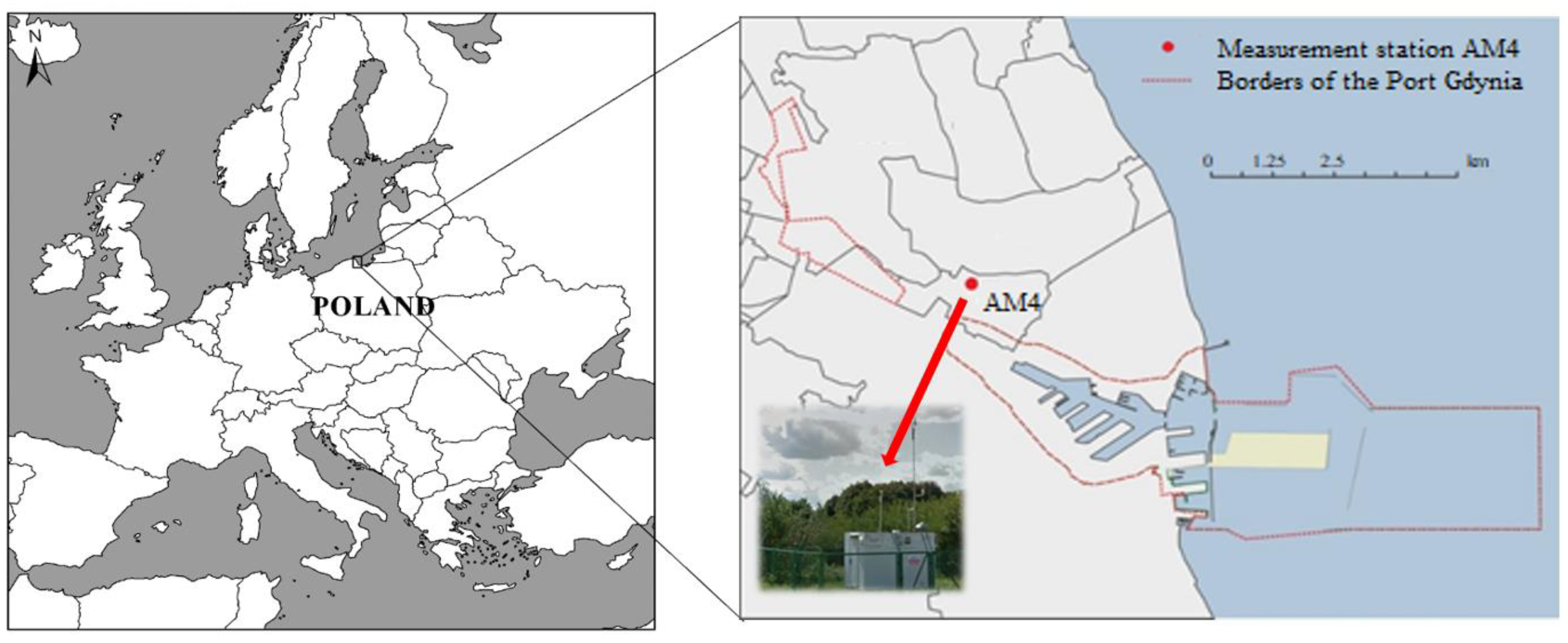
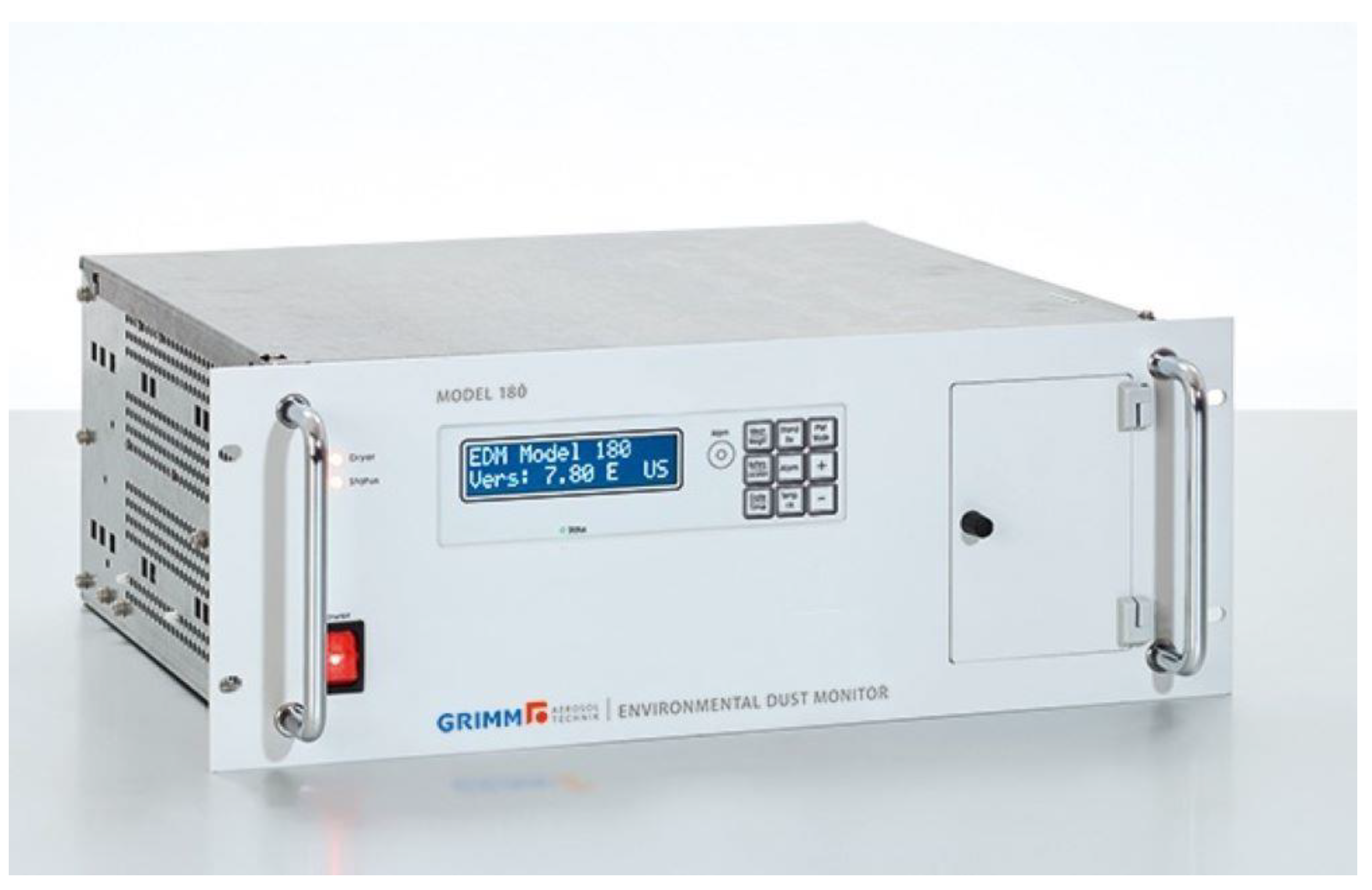
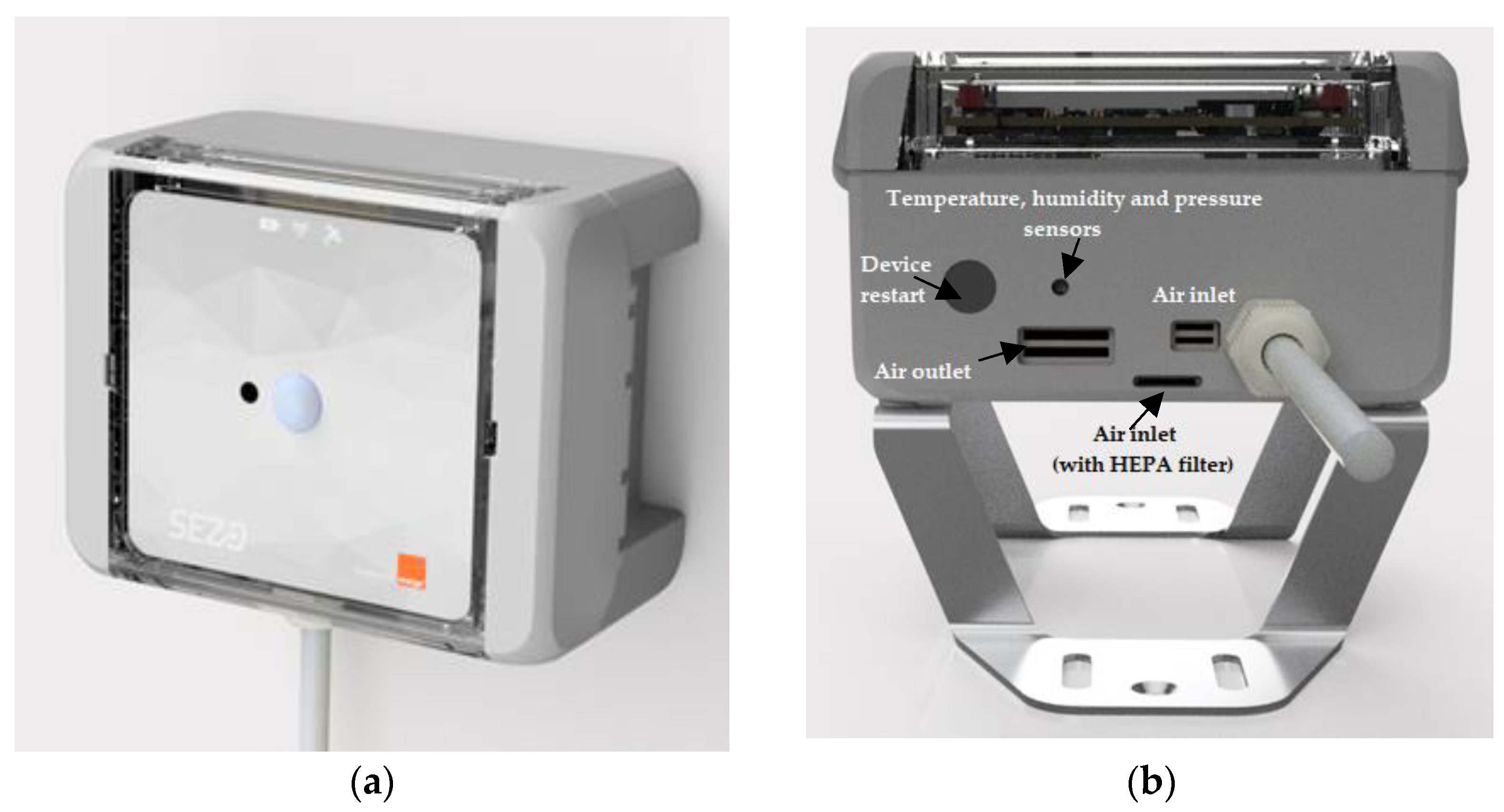

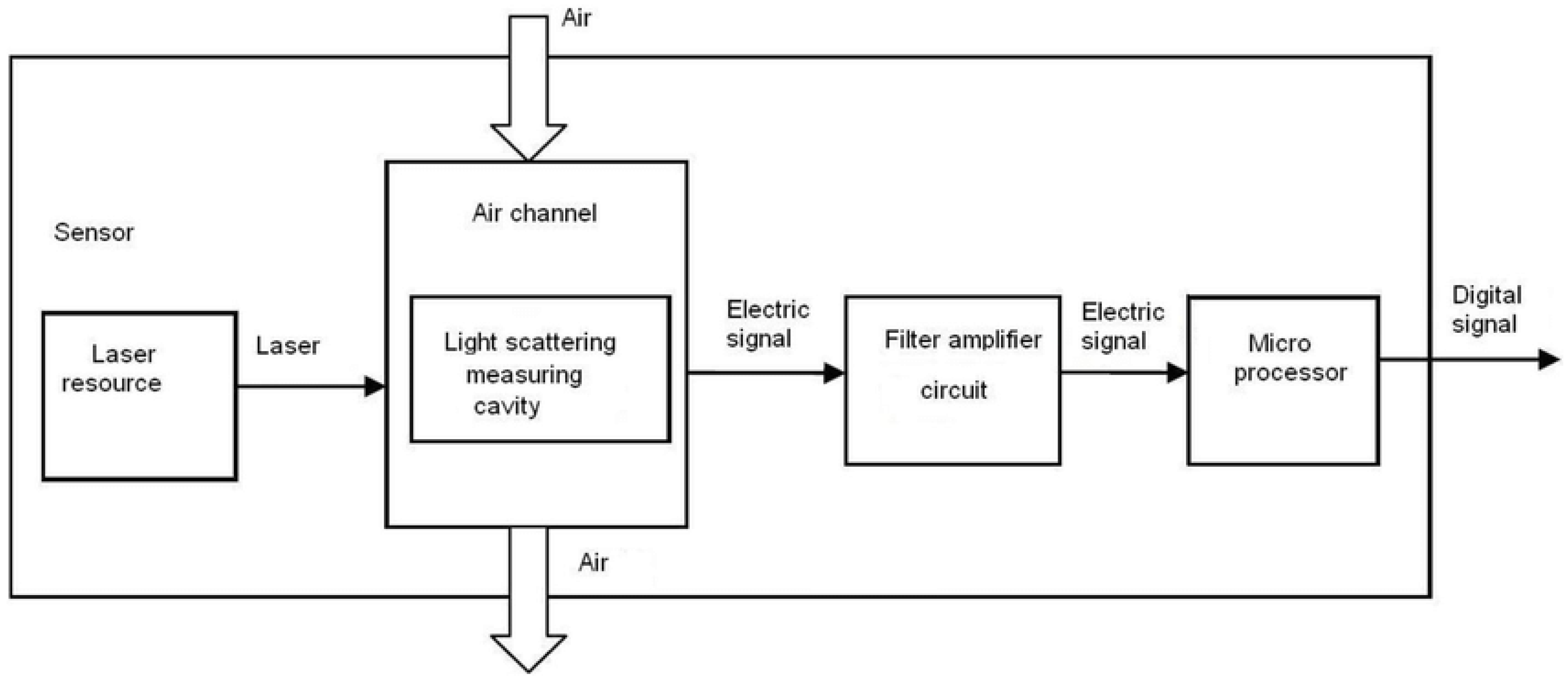
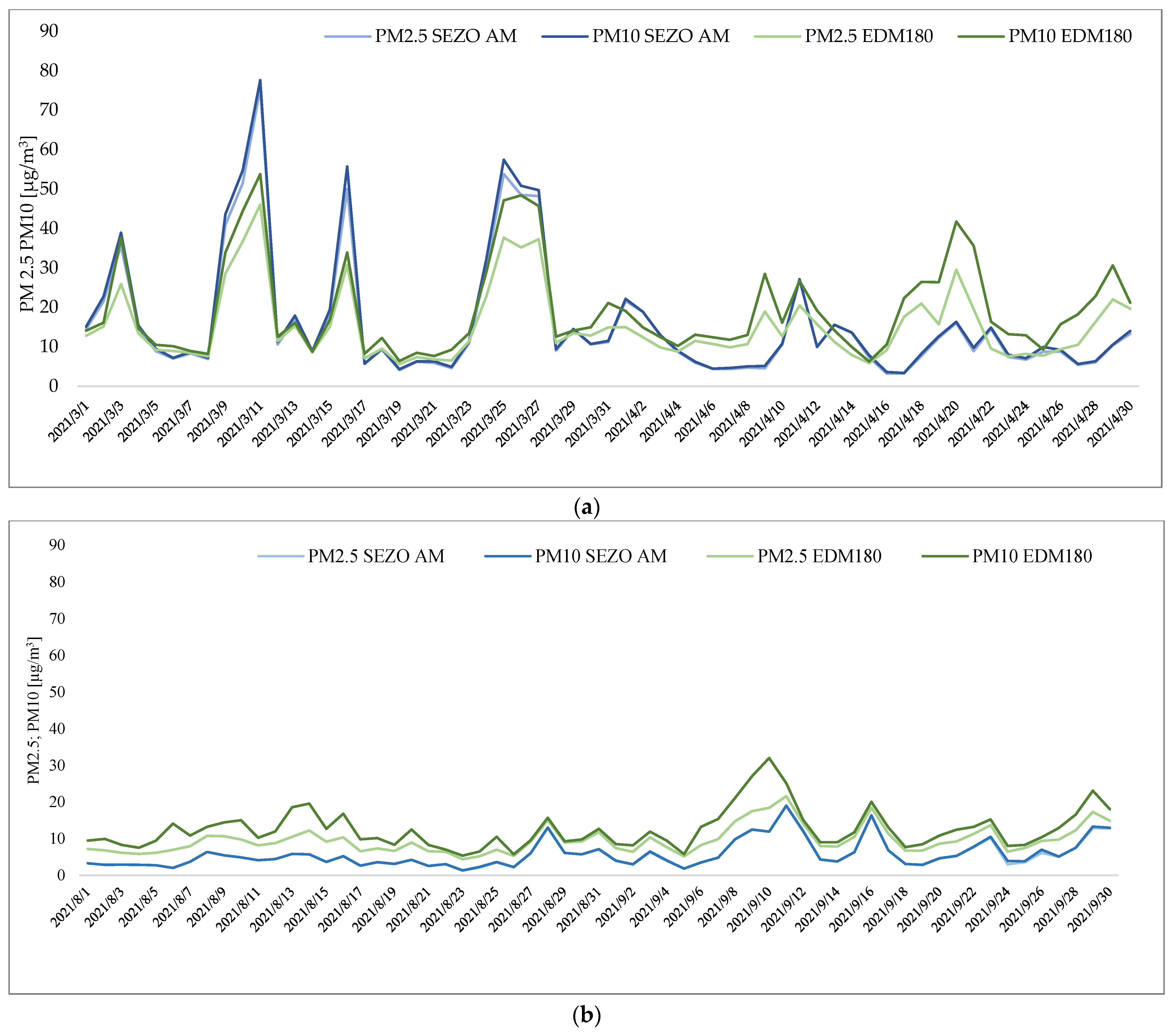


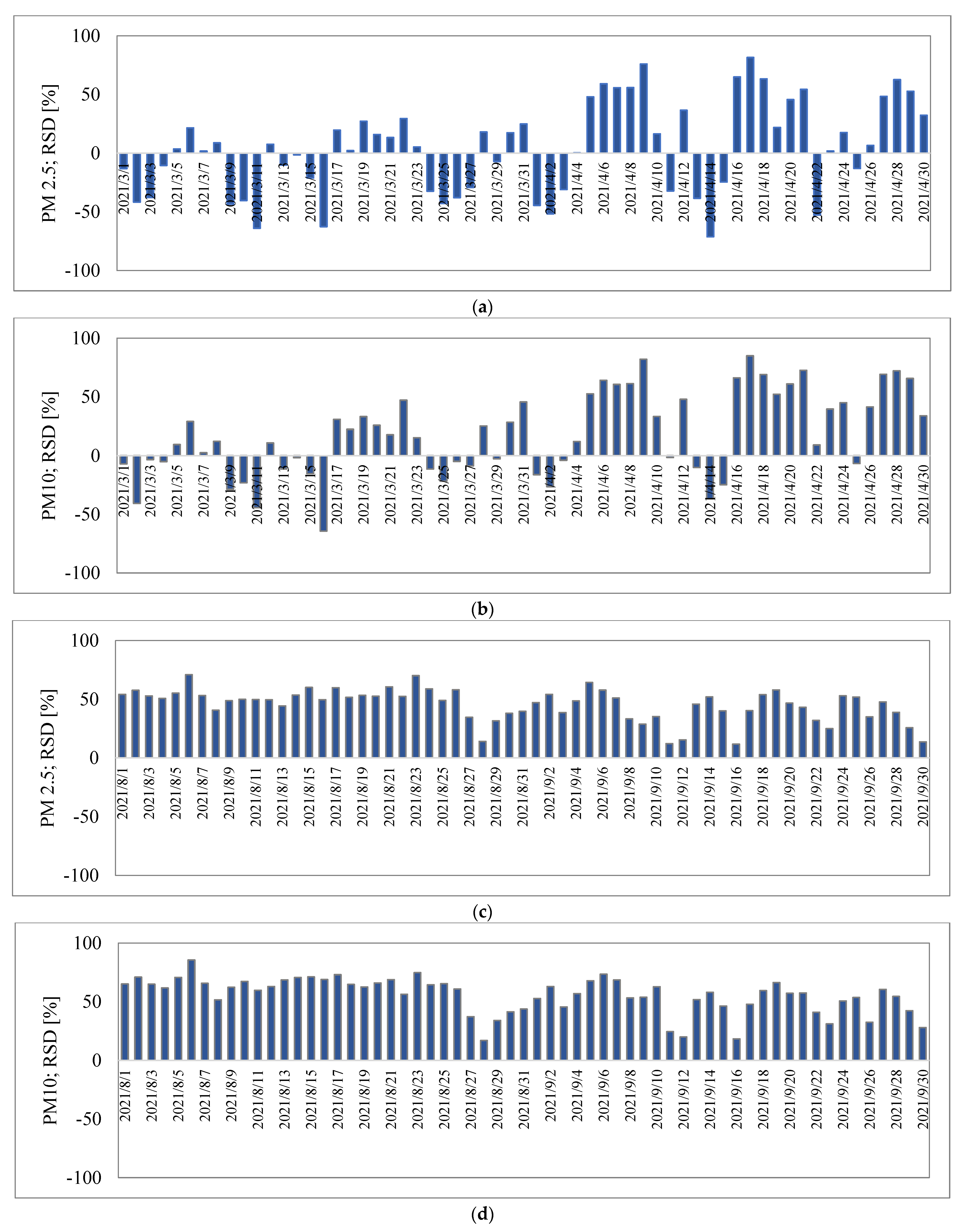
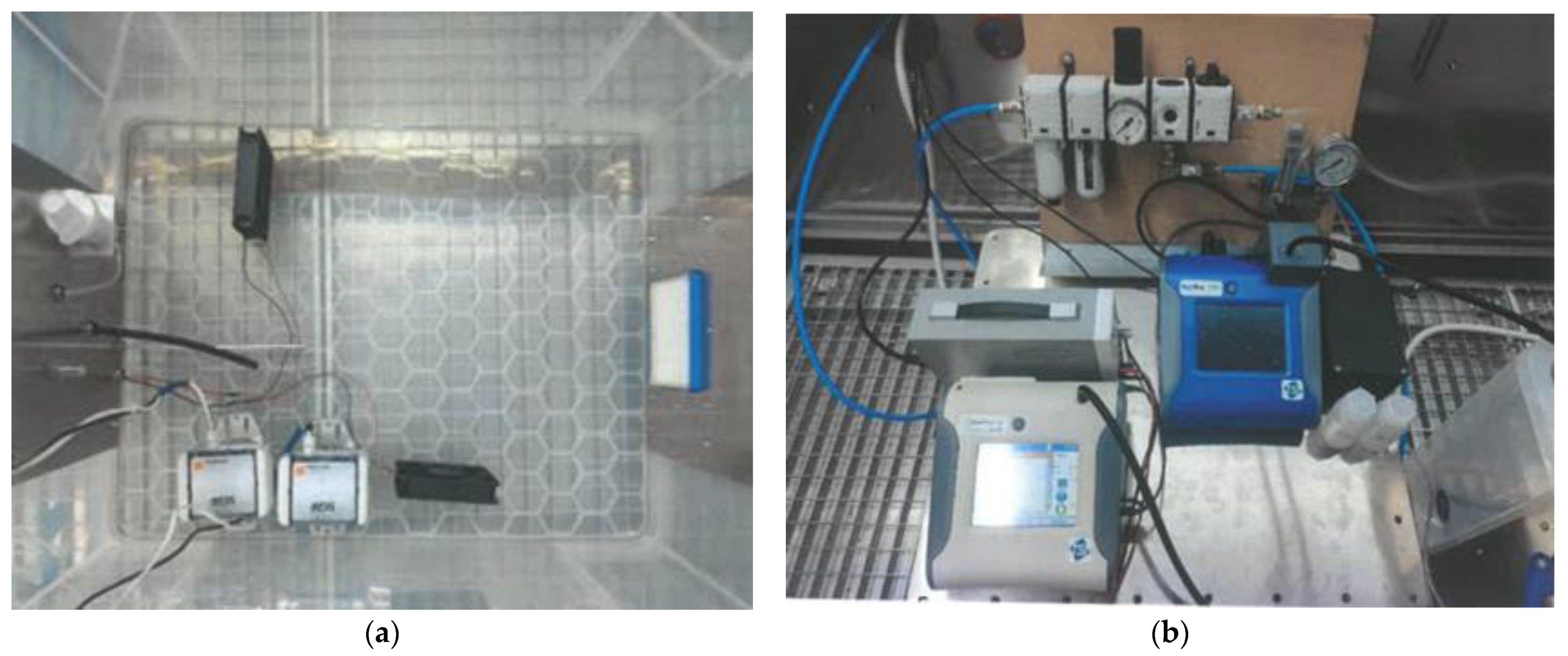


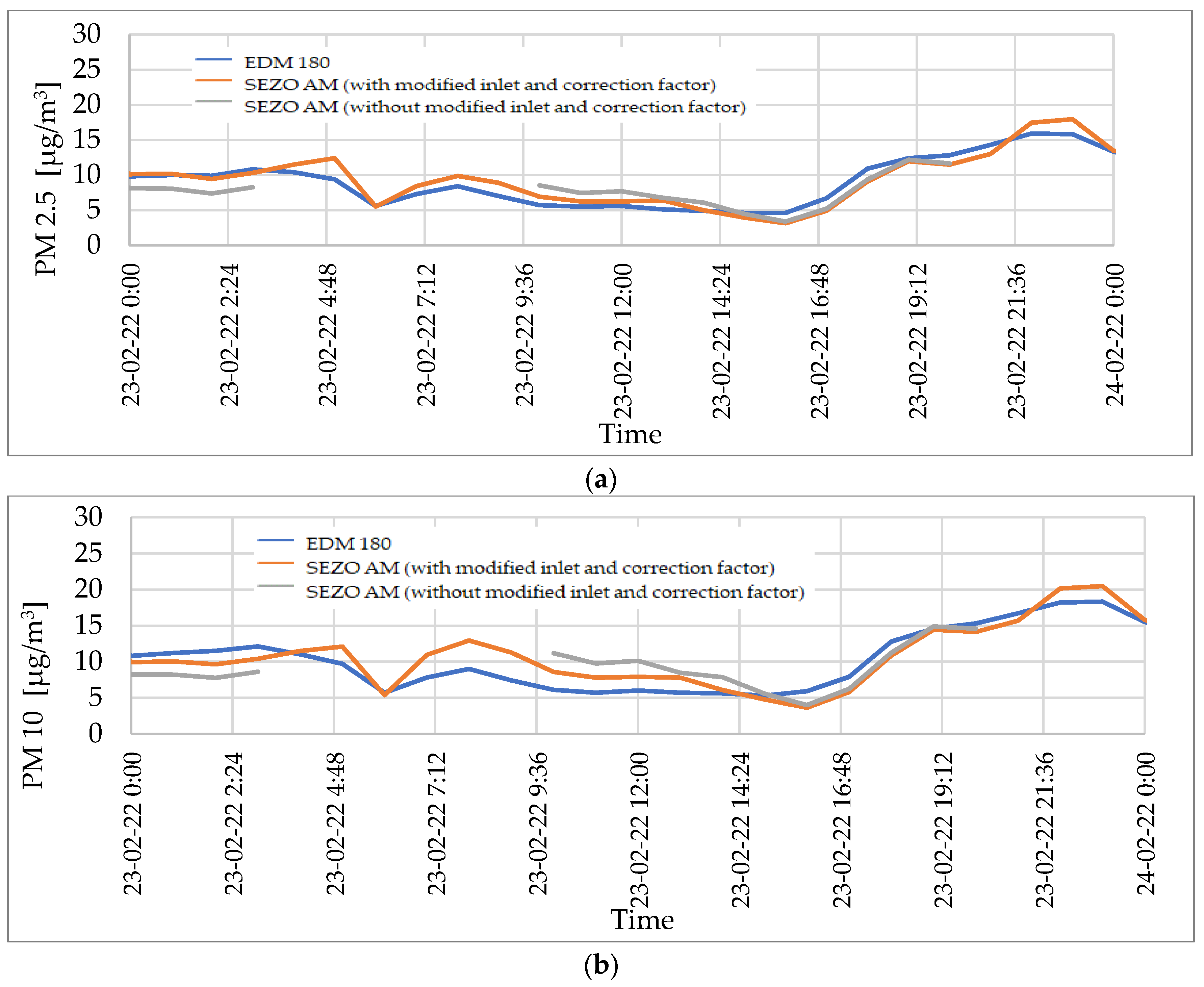
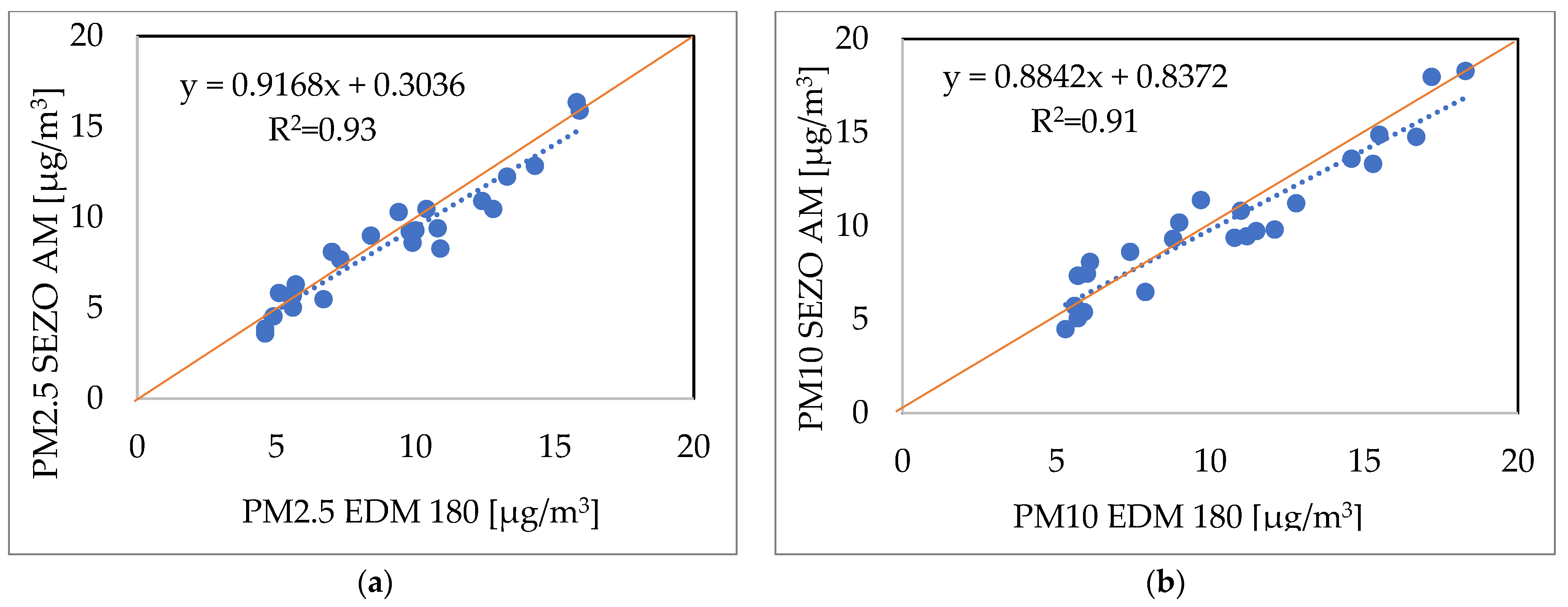
| Parameter | AM by SEZO | EDM 180 by GRIMM |
|---|---|---|
| Particle size ranges (µm) | 0.30 to 10 | 0.25 to 32 |
| Optical cell (nm) | Diode laser; 660 | Diode laser; 660 |
| Minimum interval sampling | 1 s | 1 s |
| Temperature ranges (°C) | −10 to +60 | −20 to +50 |
| Humidity ranges (%) | 0 to 95 | 20 to 80 |
| Dimensions (cm) | 11.3 × 8.0 × 6.0 | 26.6 × 48.3 × 36.4 |
| Month | Characteristic of Parameters | SEZO AM | EDM 180 | Meteorological Parameters | |||||
|---|---|---|---|---|---|---|---|---|---|
| PM2.5 | PM10 | PM2.5 | PM10 | Temperature (°C) | Relative Humidity (%) | Wind Speed (m/s) | Dominant Wind Direction | ||
| March–April | Number of measurements (N) | 17,100 | 1440 | 5.0 (−3.8–20.1) | 64.9 (17.4–87.0) | 5.8 (2.2–16.0) | 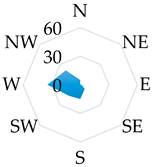 | ||
| Average (Min–Max) (µg/m3) | 15.4 (2.6–75.5) | 16.6 (3.2–77.6) | 15.4 (5.6–46.0) | 19.5 (6.3–53.8) | |||||
| Median (g/m3) | 9.7 | 10.5 | 12.4 | 14.9 | |||||
| August-September | Number of measurements (N) | 85,859 | 1464 | 16.0 (8.3–27.8) | 70.1 (34.3–90.9) | 4.4 (1.8–13.6) | 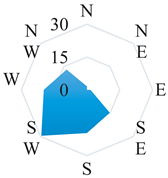 | ||
| Average (Min–Max) (µg/m3) | 5.7 (1.3–19.0) | 6.1 (1.4–19.0) | 9.6 (4.4–21.6) | 12.5 (5.4–32.0) | |||||
| Median (µg/m3) | 4.6 | 4.7 | 8.9 | 10.9 | |||||
| Fraction | SEZO 013-12A-0001 | SEZO 013-12A-0003 |
|---|---|---|
| PM2.5 | 0.86 | 0.79 |
| PM10 | 0.86 | 0.81 |
Publisher’s Note: MDPI stays neutral with regard to jurisdictional claims in published maps and institutional affiliations. |
© 2022 by the authors. Licensee MDPI, Basel, Switzerland. This article is an open access article distributed under the terms and conditions of the Creative Commons Attribution (CC BY) license (https://creativecommons.org/licenses/by/4.0/).
Share and Cite
Malinowska, M.; Lewandowska, A.U.; Król, M.; Lange, B.; Bielawska, M. The Use of the Novel Optical Method SEZO AM (WiRan Ltd.) for Measurements of Particulate Matter (PM10–2.5) in Port Areas-Case Study for Port of Gdynia (Poland). Atmosphere 2022, 13, 590. https://doi.org/10.3390/atmos13040590
Malinowska M, Lewandowska AU, Król M, Lange B, Bielawska M. The Use of the Novel Optical Method SEZO AM (WiRan Ltd.) for Measurements of Particulate Matter (PM10–2.5) in Port Areas-Case Study for Port of Gdynia (Poland). Atmosphere. 2022; 13(4):590. https://doi.org/10.3390/atmos13040590
Chicago/Turabian StyleMalinowska, Martyna, Anita U. Lewandowska, Maciej Król, Borys Lange, and Michalina Bielawska. 2022. "The Use of the Novel Optical Method SEZO AM (WiRan Ltd.) for Measurements of Particulate Matter (PM10–2.5) in Port Areas-Case Study for Port of Gdynia (Poland)" Atmosphere 13, no. 4: 590. https://doi.org/10.3390/atmos13040590
APA StyleMalinowska, M., Lewandowska, A. U., Król, M., Lange, B., & Bielawska, M. (2022). The Use of the Novel Optical Method SEZO AM (WiRan Ltd.) for Measurements of Particulate Matter (PM10–2.5) in Port Areas-Case Study for Port of Gdynia (Poland). Atmosphere, 13(4), 590. https://doi.org/10.3390/atmos13040590







